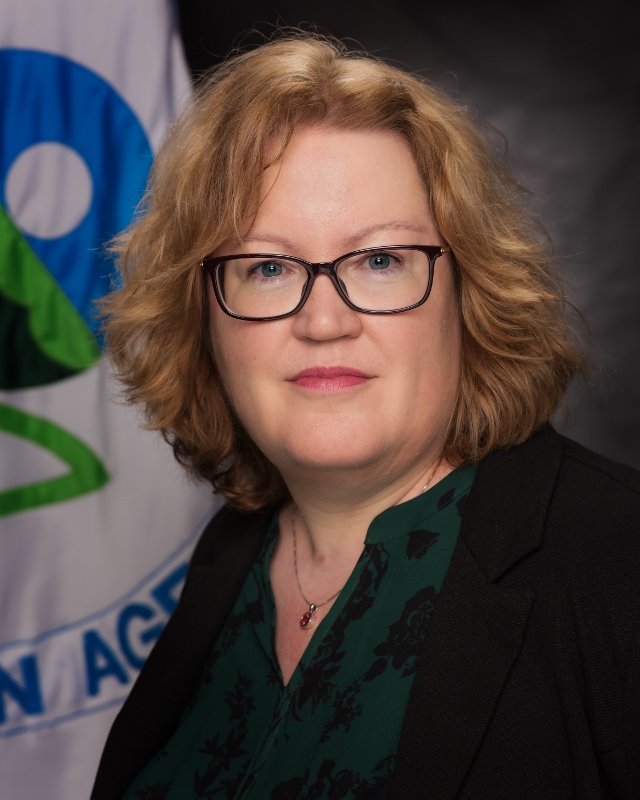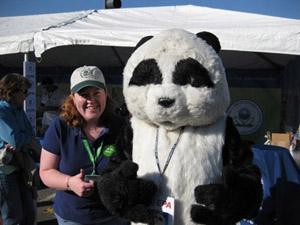Meet Principal Deputy Assistant Administrator and Chief Scientist for EPA’s Office of Research and Development, Maureen Gwinn, Ph.D., DABT

Maureen Gwinn is the Principal Deputy Assistant Administrator and Chief Scientist for EPA’s Office of Research and Development, the scientific research arm of EPA. Maureen earned a B.S. in Biology from Bates College. She earned both an M.S. in Oral Sciences and a Ph.D. in Oral Biology from State College of New York at Buffalo School of Dental Medicine. Maureen also serves as EPA's Chief Scientist.
What are some of the biggest environmental problems EPA is currently tackling?
EPA is continuing to tackle some big issues – the impacts of climate change, chemical contamination (including PFAS and lead), and the cumulative impacts of these and other chemical/nonchemical stressors to communities. EPA is designed to address many of the environmental problems we see today and is poised to take on emerging issues as they arise.
How does your science background help you in your current position?
My science background is key to my current position. Not so much the specific aspects of the first projects I worked on – my early research focused on the impact of genetics on immune function connected to periodontal disease – but learning about how science works, and how to think as a scientist. A lot of credit goes to my science teachers of years past – showing me how to not only question why something happens in a certain way, but also showing me how to devise a plan to find the answer.
What was research in the Agency like when you first started? How has it changed while you’ve been here?
One of my favorite things about research is that it is always changing. Research in the Agency is becoming more and more forward thinking – not just innovative but also anticipating future environmental and public health issues. This awareness requires us to focus on learning to understand these issues now in order to address them later.

What are some things you’re most proud of throughout your career?
I have been lucky to be involved in many great projects. For example, I have been involved in bringing multiple high-impact human hazard assessments to completion (e.g., Libby amphibole asbestos, TCE, PCE), which impacts the public health of people across the United States and beyond. I’ve spent time leading some great scientists in expanding community engagement and collaboration to meet communities where they are in order to help develop methods, tools and data they need to make decisions. I also worked in the area of new approach methods (NAMs), specifically working on advancing the use of NAMs in risk assessment in order to advance public health protection for thousands of chemicals. But I would say I take the most pride from seeing how those I’ve mentored succeed in their own right. I try at all levels to help people find their best fit – what do they want to do and how can they use their skills to be successful.
Who have you most looked up to throughout your career?
When I am asked how I got started in my science career, I always come back to a 6th grade book report assignment. I chose to do a book report on Dr. Marie Curie, who won the Nobel Prize for physics in 1903. It was fascinating to read about her job and learn about what she went through to simply do her research and to find answers to questions because she thought it was important. Her impacts were extraordinary, especially in a job that women did not usually hold at that time.
What future advances would you like to see in environmental and public health research?
I would love to see more advancement in taking an integrated systems approach to address environmental and public health concerns. This is not a new approach, although the terminology may change over time. An integrated systems approach is used to incorporate diverse data streams for increased understanding of a variety of environmental and public health issues, including addressing cumulative impacts of chemical and nonchemical stressors, and understanding the linkages between the total environment (built, natural, and social) and public health to support communities.
When did you first know you wanted to be a scientist? What interested you in a research career at EPA?
When I was in 6th grade, I was already intrigued by science, and soon I realized that in science you could make a difference. There are other career paths you can take with my degree, but I like making a difference in public health. One thing I like most about my work at EPA is that I feel like my contribution to protecting public health is more direct and impactful.
If you weren’t a scientist, what would you be doing?
Probably something in event planning. I used to do a lot of fundraising for efforts like raising money to start a no-kill animal shelter and supporting education. Again, I wanted to make a difference in issues I cared about and was able to use my organizational and leadership skills to help through volunteering and building community support.
What advice would you give a student interested in a career in science?
Always keep an open mind! I started out in dental research and here I am working in environmental protection. It is okay to move around and try new things, even if you have to go back a few steps. If you love it, it is worth it. And most importantly, make sure you do love whatever you are doing. Science can be tough and made more difficult if you can’t find joy in what you do.
Editor's Note: The opinions expressed herein are those of the researcher alone. EPA does not endorse the opinions or positions expressed.
